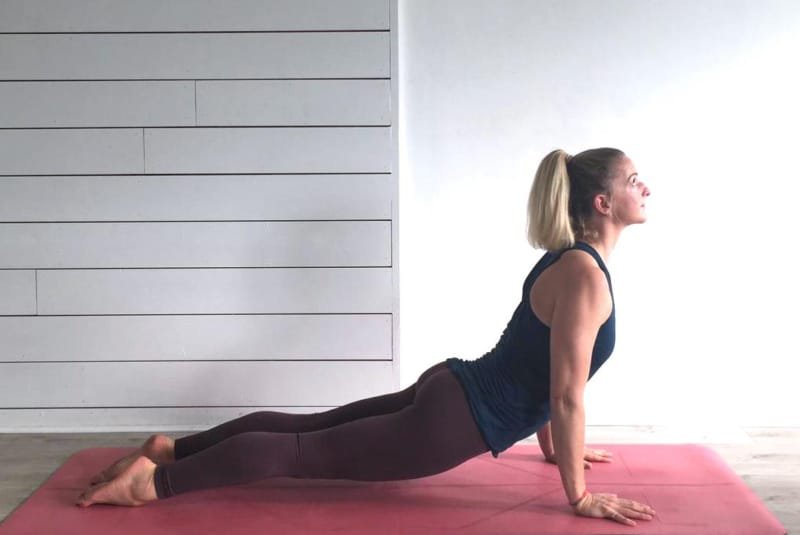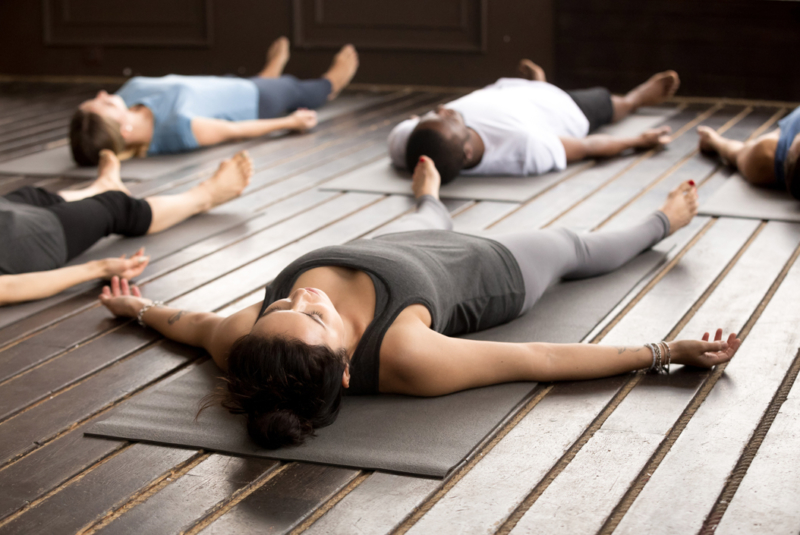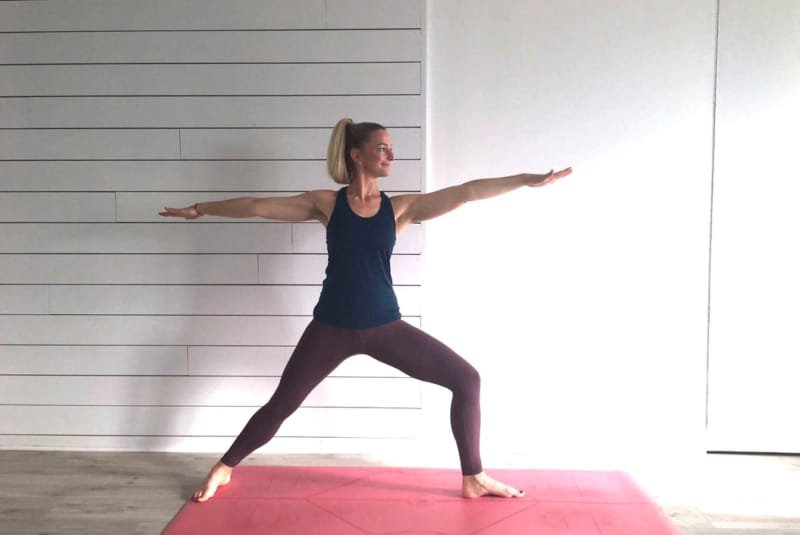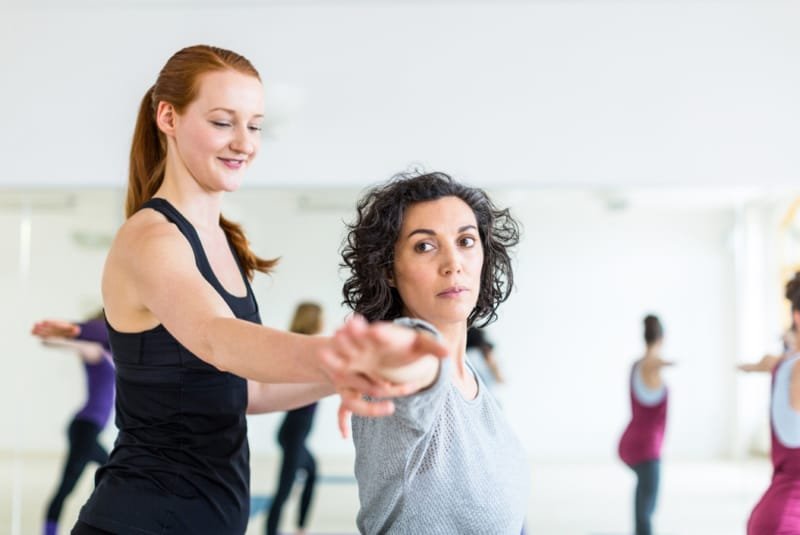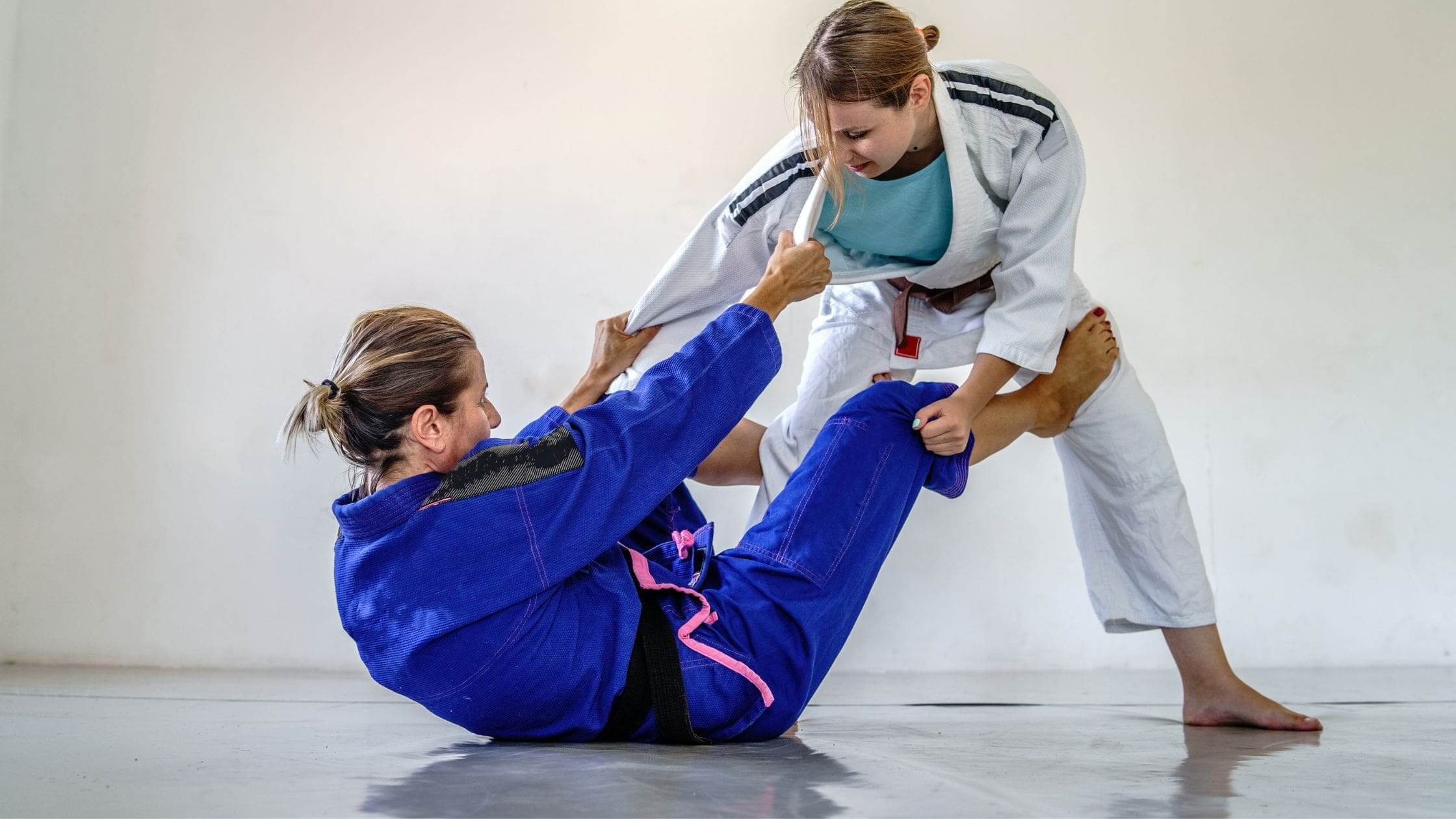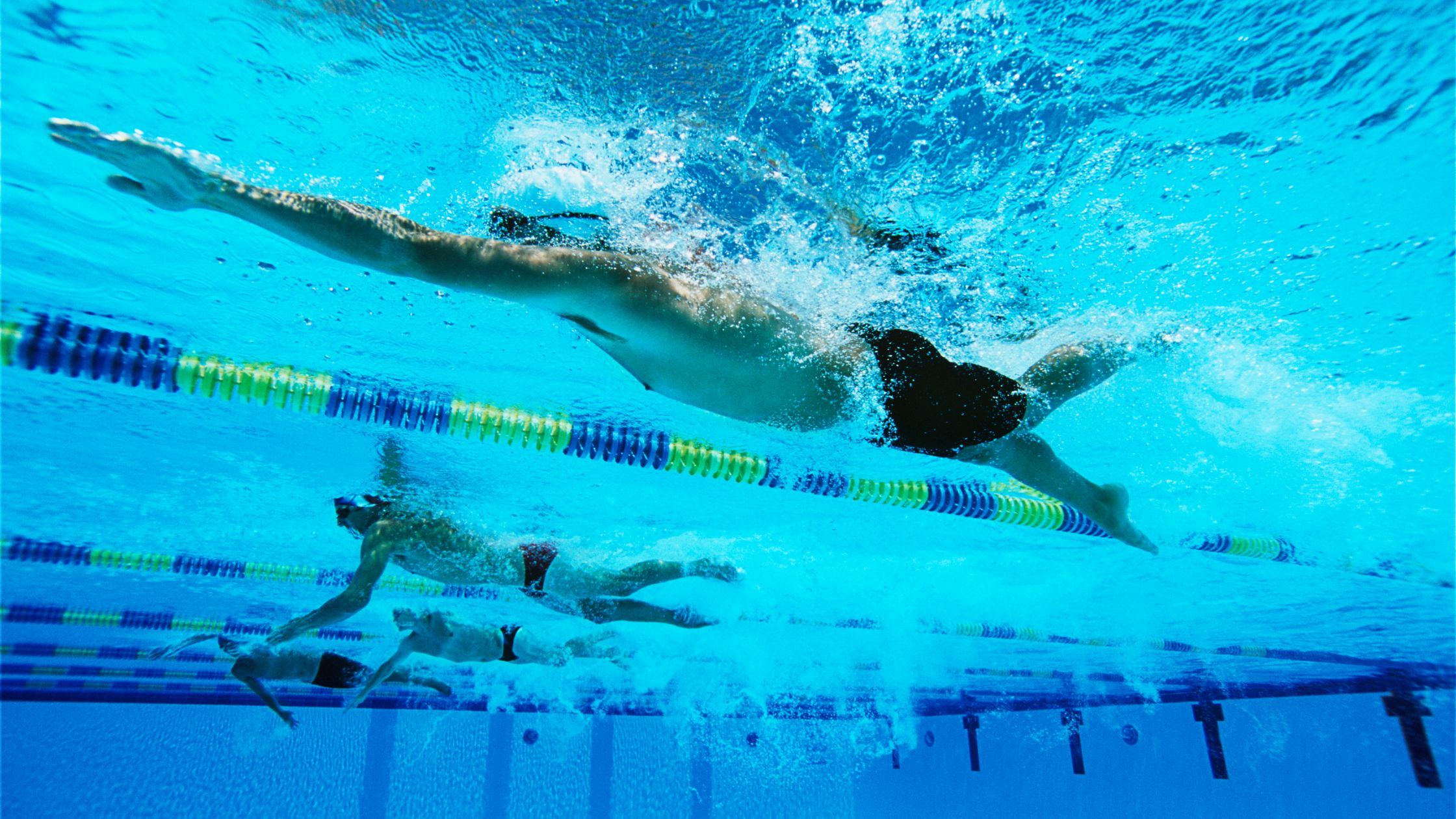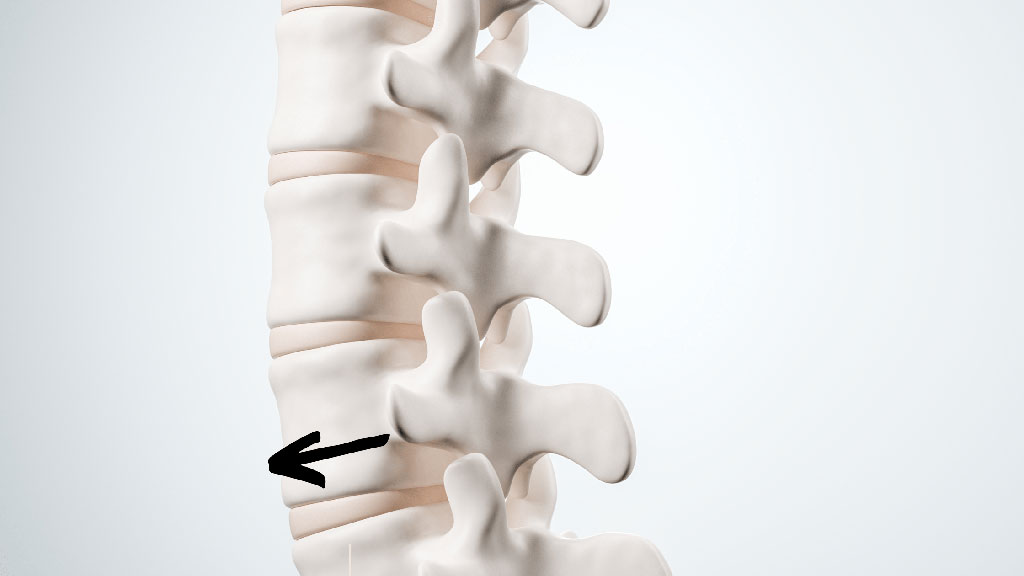As well as being passionate about Pilates, the team at Complete love the ancient practice of yoga. It is a powerful tool that helps to calm the mind, connect us to our breath, and increase our strength and flexibility. We also find that practising it complements our regular Pilates classes perfectly.
Someone else who loves yoga is Andrea Leonard, a Complete Physiotherapist and newly qualified Vinyasa yoga instructor. She sat down with us to give us a Physiotherapist’s take on the advantages of yoga.
Q. Hi Andrea, thanks for chatting with us today. Let’s start with your first encounter with yoga. When was that?
A. It was about seven years ago when I was doing lots of triathlons and running. At the same time, I wasn’t really doing enough cross-training, such as Pilates or yoga, or getting in the gym.
This meant I had great cardiovascular fitness but wasn’t very strong and I picked up a few injuries. It got to the point where I had to stop running, which meant I couldn’t compete in triathlon. That was quite hard for me physically, mentally. That was when I got into bikram yoga. With bikram, I felt I could still get a good workout [despite my injuries]. It’s in a very hot room, so you sweat a lot and get out of breath – as an athlete that appealed to me!
But I quickly realised that, although bikram yoga has its place, for me it was very repetitive; it’s the same sequence with no variation. This means you get good at doing the poses, but there’s a ceiling to your progression.
Also, it’s done in a 40-degree heat so you sweat a lot. On top of doing lots of other intense exercises, I found I was getting very dehydrated which was having a negative impact on my other training.
Something it also lacked, which perhaps I didn’t even realise at the time, was there wasn’t a strong focus on breath and relaxation and mindfulness that there are in other forms of yoga.
Q. Did you try different types of yoga before discovering your love for vinyasa yoga?
A. I tried various different types of yoga, different teachers, and classes and facilities, and enjoyed that process.
But then I really felt an affinity with a studio locally to me where they practise vinyasa flow, power yoga. A big thing that drew me to it was the community; everyone was super friendly, inclusive – it just had a great feel to it. I started practising there regularly and then noticed a big change in my physical strength and especially my core. I realised that it was something that I actually wanted to bring into my Physio practice, so I decided to do my yoga teacher training.
When I first started my yoga teacher training I was fairly certain I didn’t want to teach classes. I just saw it as a tool to improve my own practice and perhaps bring some of that into my Physio work.
But actually, as I progressed through the training, I realised that I really enjoyed teaching groups and the challenge of teaching a class. Perhaps initially it was a bit daunting and that’s why I thought I didn’t want to do it. But it’s something I really enjoy. I’ve also found that I love doing the one-to-one or two-to-one sessions. During these sessions I can really focus on people’s technique and give them a lot more individual attention.
Q. Do you find that you’re tending to keep your yoga teaching separate to your Physio work, or are you integrating them?
A. At the moment, I’m doing a lot of stuff separately. I teach some yoga classes and teach at people’s homes. But I am also exploring how best I can bring it into my Physio practice, incorporating sequences [into the home exercise programmes] I give my clients and using breathing techniques with my manual therapy.
Meditating and mindfulness are big parts of yoga – it’s not just about the physical asanas. This [aspect of Yoga] has helped me become more attuned to the mental wellbeing of my clients and how it affects them physically.
Q. How do you see the relationship between yoga and Physiotherapy evolving in the future?
A. Over the last 10-15 years it’s become very common for Physios to incorporate Pilates into their practice. But this isn’t the case with yoga – it is only just coming through right now and becoming popular with Physios.
I can’t see any reason why yoga shouldn’t have an equal place in the physio practice as Pilates. I think it’s just down to people like myself to bring its benefits to the forefront.
Q. You’ve talked about the benefits yoga has brought to you. What do you feel are the main benefits of yoga for your Physio clients and your yoga clients?
A. Something my patients and my yoga students have struggled to get from other forms of exercise [is Yoga’s] focus on breath.
Physiologically, your breath and your neural system are linked. One way to use breath is to stimulate your body and energise you. When we get excited about something or stressed out, our heart rate and breath rate often increases. At the same time, our breath becomes shallow.
You can also create calmness via your breath. Slow, long exhales stimulate your parasympathetic nervous system which slows everything down and promotes a state of relaxation. Using your breath in specific ways can affect how you feel, enable you to deal with stress and even improve your sleep.
The other factor, particularly with vinyasa flow yoga – the form of yoga that I teach – is it’s quite a dynamic strengthening and stretching form of yoga. This means people who do it are going to benefit in term of strength and their mobility. I am genuinely the strongest I have ever been. I just wish I had realised the full benefits of yoga when I was doing triathlon. It would have made a big difference to my performance and resilience!
Yoga has also taught me how to create for my clients a sequence of exercises that really flows. They’re still targeted to whatever they need, such as thoracic mobility or glute strengthening, but it’s easier to practise at home [than traditional Physio exercises].
Q. How does this differ from traditional Physio programmes?
A. The problem with most stretching and strengthening programmes Physios give their clients to do at home is that they can feel disjointed and are often ineffective because they are static. But by making them flow as a sequence, I find people are more likely to perform it from beginning to end.
Plus, after it, they don’t just feel like they’ve just done some stretches, they feel like they’ve had a dynamic work out. They also instantly feel more flexible and energised.
Q. So, as you mentioned, Pilates is already quite integrated with Physiotherapy. You also work at Complete alongside clinical Pilates instructors. From your perspective, how do you see yoga and Pilates working together?
A. I think they really complement each other.
There’s obviously a number of ways in which they’re very similar: they both have a strong focus on mobility and strengthening. However, I do think yoga can bring something slightly different and believe that variety in life is key
Q. Are there people with certain conditions or needs that you would recommend doing either yoga or Pilates?
A. Sometimes it simply comes down to preference. People are drawn to one or the other through previous experience or expectations. Both Pilates and yoga can be modified to suit the individual so there’s no reason one would be less appropriate than the other.
However, yoga does have that stronger focus on the relaxation component. We finish [yoga classes] in Savasana, which is where students have around 5 minutes or so to really relax, close their eyes, and be guided to focus on their breathing. This allows them to practise mindfulness, meditation and really come out of their thoughts and be present in their bodies. So, it may well be that there are certain clients who need that from their session.
People might also want something they can perform at home. They might not have any formal equipment or access to it. For them, yoga is a good choice because it is something you can do anywhere.
At the same time, I think the two can complement each other very well. It’s not necessarily a case of doing Pilates or yoga.
Q. As a Physio you see patients who are injured, maybe in pain, and perhaps are struggling to carry out their usual exercise routine. How do you see yoga helping them through their rehab and getting back to the activities they enjoy?
A. Because my background is in Physiotherapy, when I teach yoga I’m able to modify the exercises.
That could mean using blocks, or changing the poses slightly to protect an area that’s recovering from an injury, or to optimise their techniques so that they’re not overloading joints and ligaments. This means I can introduce some yoga at quite an early stage in somebody’s rehab.
My yoga and Physio knowledge is particularly useful when it comes to treating my clients who have sustained injuries through yoga.
The problem I find with these clients is that many of them enjoy yoga because they are quite flexible and feel they can get really deeply into postures. It’s encouraged by this social media trend at the moment, particularly on Instagram, for people to be posting what look like incredibly impressive postures.
[What we have to remember] is that these are often hypermobile individuals who perhaps have a background in dance or gymnastics. They look amazingly impressive but for your average person, you’re going to actually end up doing potential harm to your body by repeatedly going into extreme backbends or relying on your flexibility, pushing your joints and your ligaments to the end of their available range.
I focus a lot of attention on making sure people who enjoy yoga have a good technique and that they understand what the poses should feel like and how to use their strength rather than their flexibility. I essentially try to make them more mindful in their practice.
Q. Are you teaching yoga to athletes or people training for specific sports events?
A. Given my own sporting background, that’s definitely where I want to take my yoga practice.
I think yoga can be incredibly beneficial for people who are doing a variety of different sports – as I’ve already mentioned, I’ve really noticed it for myself. Although I have done long distance triathlon for years, since stopping triathlon and doing more yoga I am stronger and more in tune with my body than I’ve ever been. My core is so much stronger than it ever was.
As a sportswoman, I know that there are so many benefits to doing yoga alongside sport. The performance gains that it can bring someone can be quite considerable. Building strength through it can help prevent sports injuries as well.
Q. Can you give an example of how this work in practice?
A. At the moment, I’m teaching a weekly yoga class to a rowing club.
With [the repetitive nature of] rowing there are certain movement patterns that rowers become very good at performing, for example, rotating to their dominant side. However, they really struggle to rotate to the other side or open their bodies out of that flexed rowing posture. That makes them very powerful in certain positions but they struggle with moving their spines in other ways, such as back bending. They also find standing and balancing postures hard.
Yoga is a great way for these rowers to explore different ways of using their body and get more in tune with them out of the boat. It’s also proving an effective way for them to gain a bit more symmetry and counter some of the repetitive movements they’re doing on a regular basis. After only 4-6 weeks of a session a week I’ve seen big improvement in these athletes’ ability to move their spines in all directions and in their strength.
Q. If after reading this people want to start doing some yoga, perhaps for fitness or injury rehabilitation, what would be your advice?
A. I’m a great believer in the power of one-to-one sessions.
Whether that’s yoga or Pilates, I think it’s really important to understand the principles of any new activity before going into a class. You could be going to a group class for years and not really understand the fundamentals, how to use your body or how to connect with the right muscles. You might not even be seeing any benefits because you’re not getting individual attention.
So, my advice is, and especially if you’re dealing with injuries, is to start with at least one one-to-one session. It’s amazing how small tweaks and changes to what you’re doing can make all the difference.
I offer one hour one-to-one yoga sessions at Complete Pilates privately. During these sessions I go through different yoga postures and movements with my clients. I also work on the fundamentals. This involves showing people where they should be getting their movement from and how to engage the right muscles to make them feel stronger in poses. This helps my clients protect certain areas of their bodies so they’re not just relying on their flexibility.
Equally, for clients whose flexibility is an issue for them, my sessions focus on teaching them how best to gain better flexibility. It’s making them understand that brute force is not the answer. Instead, the best way is through using their breath and aligning their body better to slowly, gently and effectively work to gain more mobility.
Find out more from Andrea and get in touch to see how she may be able to help you.
Education is key:
These blogs are designed to give information to everyone, however, it is important to remember that everyone is different! If you have not seen one of our therapists and have any questions about injuries, what you have read or whether this may be useful to you, please just ask. We are more than happy to help anyone and point you in the right direction. Our biggest belief is that education is key. The more you understand about your injury, illness and movement, the more you are likely to improve.




